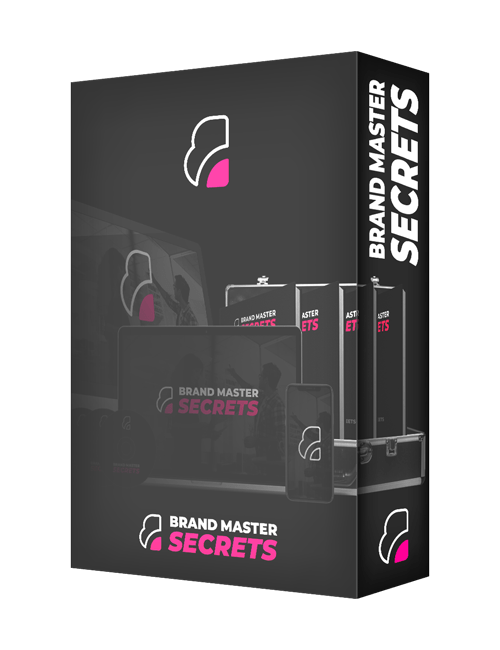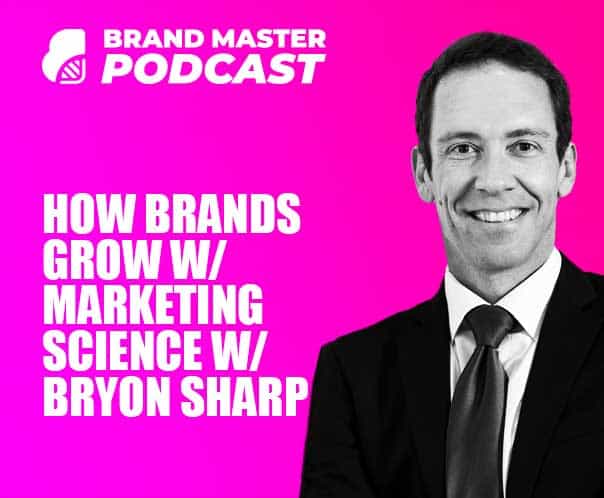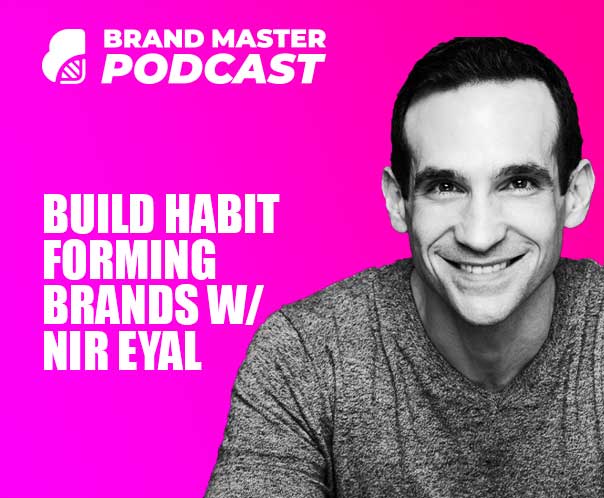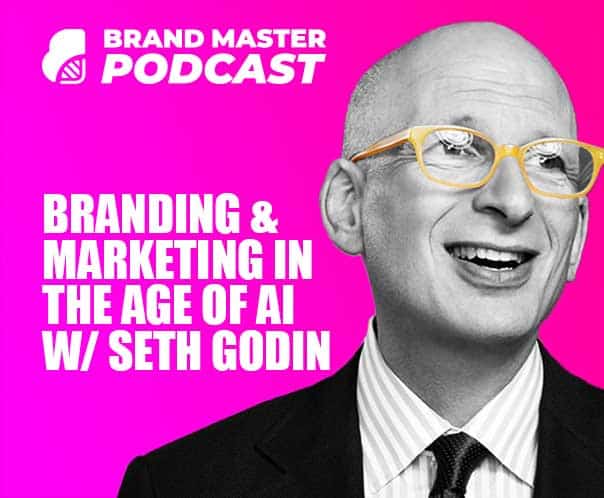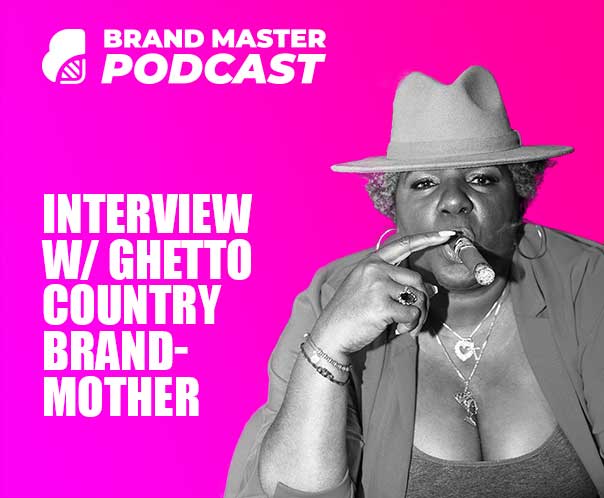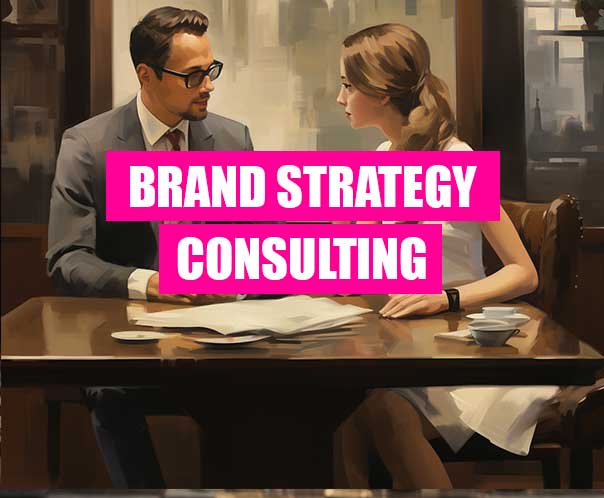I’m joined by Ulli Appelbaum award-winning brand strategy consultant and author of the amazing and hugely applicable book The Brand Positioning Workbook.
Ulli has over 20 years of experience creating brand strategies and building brands with world-class agencies including BBDO, Leo Burnett…
He’s contributed to 7 Effies and an ARF Ogilvy award for Excellence in Research and has delivered insights and strategies for brands such as Harley Davidson, Nestle & Procter & Gamble..
In short, Ulli is an absolute beast when it comes to brand positioning and today he shares he’s wealth of knowledge on
The Creative Brand Positioning Process
The 26 Sources of Brand Association
How to alter your thinking to find unique positions
So if you want to learn applicable techniques you can use them immediately to enhance the positioning exercises and outcomes for the brands you build…
From a positioning expert who’s done it for the best of the best then stick around for this hugely valuable article….
The Brand Positioning Workbook

Stephen Houraghan
This is brand strategy 101, the center point of everything we do, which is positioning and finding a way to give our audience a reason to choose us over our competitors.
Can you give us a small insight into the journey that you came on to reach in the point where you wrote a book on position?
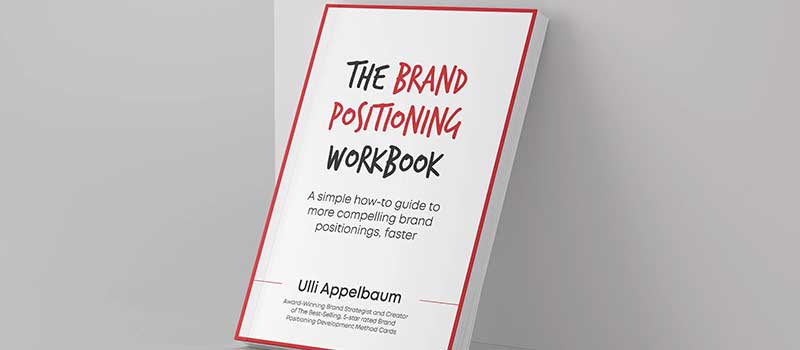
Ulli Appelbaum
I went to business school in Europe management consulting or finances and I discovered The Positioning Book by Al Ries and Jack Trout and also read David Ogilvy on Advertising and always fascinated me is
What motivates people to act?
How can you shape that perception people have about your brand
So that’s how I drifted into account planning at various advertising agencies.
Over my career, I must have done. 250 positioning exercises and what I always thought was fascinating was that each organization, whether it’s a cooperation like Proctor and Gamble or Nestle or an advertising agency have a little framework or philosophy on how to develop a brand positioning platform.
But I’ve never seen a book out there that really describes step by step on how to develop a positioning platform, and how to go about doing so. So after doing this, as I said, 20+ years, I decided, “You know what it time for me to write this book”.
Because I learned over the years the quicks and tips, methodologies, and concepts that allow me really develop positioning, whether it’s for small organizations like startups or global organizations across 15 countries, et cetera, et cetera.
Call me old school but I wanted to create a legacy and this book is sort of like my legacy.
Brand Positioning Is A Creative Problem-Solving Exercise

Stephen Houraghan
That’s awesome and I’m so glad that you decided to take the time to you know, to put down and write everything that you learned along the way.
Because for anybody getting into the brand strategy they tend to find that when they arrive at the brand strategy process, the positioning process it’s not easy.
It is a very, very creative process that takes a lot of strategic and creative thinking.
Can you talk us through a little bit of your perspective on that and a little bit about your creative process?

Ulli Appelbaum
Absolutely, and you’re making an important point.
Often strategy is described as something very analytical, very data driven, and very deductive.
I see this data point, plus this data point goes my conclusion should be, this is my positioning platform and nothing against data, but I believe that it’s what you do with the data that leads to really interesting positioning ideas on novel ideas.
And when you think about the positioning process it’s really about how you look at your brand, you look at your consumers, you look at your competitive environment
And what you do is you develop hypotheses on what could the solution be based on that exercise.
You create a list of potential solutions that you then need to analyze a line versus your objectives. identify teams that come up.
So it’s really about generating hypotheses and ideas, which for me makes it obviously a creative ideation process.
So we can all come up with the same solutions, but the name of the game is to come up with a solution that is fresh to the market, and that is true to your brand that will resonate with the consumers, but that people haven’t seen before.
You know, that a car drives fast and easy. We all know that a food product needs to taste good. We all know these but how do I bring to life a story that really allows the brand to stand out?

So that’s why I look at it as a creative problem-solving process and the implication of that often there is this myth about creativity is like I sit under a tree and all of a sudden lightning hits me and I have a brilliant idea and that is really misleading.
Because creative ideation is really the outcome of a rigorous process that the group going through the process needs to be aware of defining the problem.
Understanding what you’re trying to solve for it
Determining what objectives you’re trying to fulfill
Do you want to fill a gap in the market?
Do you want consumers to speak about brand?
Do you wanna increase your perceived quality as a brand?
Those are all things you need to consider and then you have 2 phases.
The most important one in my opinion is what I call the divergent phases, where you’re looking for these hypotheses.
And there, the point is really about going broad and deep. So you want as much as many ideas as possible, that are as different as possible, and through that, you then in the analytical phase the case study date and implement down the road.
So this is the creative problem-solving process, is for everyone who is used to developing brand strategies.
I’m sure you’re familiar with that as well that is the same process you go through which I find kind of interesting. Knowing that we are really about in the first phase, identifying as many possible ideas as we possibly can, that are they diverse, that are they divergent, et cetera, et cetera, is the name of the game, quality in; quality out that’s as simple as that
PRO Brand Strategy BluePrint
Build Brands Like A Pro Brand Strategist
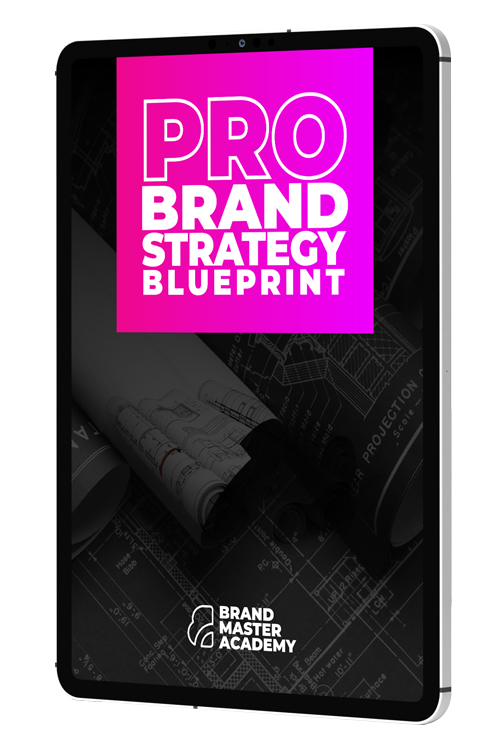
26 Sources Of Brand Associations (Creative Brand Positioning Tool)

Stephen Houraghan
I absolutely love that and coming from a creative background, myself, design background and anybody listening who’s come from any kind of creative background, really without those processes in place, you’re never going to get to the best possible solution.
One of the most daunting things is to sit down with that white page and have no real starting point in place and we all tend to, as creatives go off and find this kind of inspiration and this kind of starting point.
Then we build our processes and our systems to really evoke and spark the best ideas.
So I love the fact that you embrace the same philosophy for something in the strategic and analytical world as positioning and I love how you’ve integrated that into your book as well.
You’ve got the 26 Sources Of Brand Associations and that is ultimately a creative brand positioning tool.
Can you give us a quick overview of those 26 sources of brand associations and how you would use them within your workflow of building brand strategies and positioning strategies?

Ulli Appelbaum
Absolutely, thanks for asking. So to your earlier point, yes, absolutely.
It’s crucial, to think differently.
What I’ve learned is most competitors in a category have smart people on board, that have access to millions and millions of dollars of data.
So we are all sitting with the same data and have the same IQs and marketing expertise. So we’re all competing with the same tools, right?
Coming up with something different is the name of the game in that context.
So the 26 territories, the way I look at it is brands are associations, right?
Bundles of association, whatever consumer associated with your offering, whether it’s driven by your marketing, your advertising, your communication, or whether it’s driven by what your neighbour says or what your wife says, or what the press and the media.
This is what shapes perception of the brand.
Early in my career, I discovered the like 26 sources of brand associations, which if you explore them systematically when developing a positioning platform leads you to way more ideas, and potential solutions in this divergent phase, I mentioned earlier than other methodologies I have seen or worked with in the past.
These 26 associations, it’s really not rocket science.
Every experienced marketer will know them and will be familiar with them.
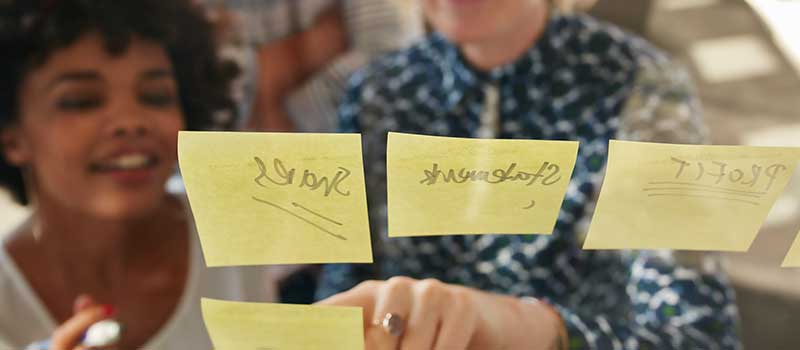
What’s new is how they’re put together and how they’re being used. They’re basically three groups of association, which again, every professional will be familiar with is one is
#1. The frame of reference – frame of reference in which I wanna talk about my brand? Is it my immediate competitor? Is it a consumer ritual? Is it culture? Um, you know, is it the category convention?
#2. What value does my brand provide – In here the sources of association, the typical one is the benefit.
Functional and rational benefit and we never go beyond that, but it can be so much more, it can be an experiential benefit. It can be tapping into values, consumers aspire to.
For a typical example here, it’s already a few years old. It’s like in the US, there was this global campaign around CITIBANK called live richly.
This really emphasizes the sort of like aspiration consumer head, which is yes, money’s important, but there’s more important than money and banking issues.
#3. How to connect with your consumer – its like McCann used to have this, uh, tagline called “truth well told”, which is what is it about your offering your product, your service, your idea that is so unique that it supports the benefit you are claiming in a distinctive and unique way.
So these three area context the value you provide and how you decide to connect with your consumers and the product elements. Every marketing expert will know those are the elements of brand positioning statement right?
When you develop a positioning platform you can go through these 26 angles and sources association and really inspire your thinking.
What I forgot to mention is these 26 eras and I didn’t make them up. I said earlier, they’re really tried and true proven positioning strategies and that literally came out of the analysis of over like 100 case studies of successful branding and marketing
What this tool does guides your think, what you said earlier when you’re sitting in front of a piece of paper or you have a group that thinks, similarly that will come up with the same solution, this allows you to explore your brand from these 26 angles.
I’ve yet to find a case where we weren’t able to come up with something that is absolutely unique about the brand, whether it’s the frame again the context in which we present the brand.
How we connect with the consumers or what we say about the brand to make it stand out basically.
So that’s where it comes. Sorry, long explanation to your question, but that’s basically the core of the 26 territories
Explore Brand Strategy
Programs & Tools
Brand Positioning Development Process

Stephen Houraghan
Yeah, and as I said before because I’ve come from that background and then applying the same kind of methodology when it comes to positioning and having those moments where you sit down and you look into the market and you go, “oh my goodness,” the competition is so competitive where are we gonna fit in here?
Without processes, without a starting point or references to go from it’s very, very easy to get overwhelmed very, very quickly from a professional point of view because there’s a client in the background waiting for you to come up with something unique to guide them to something unique.
Having such a tool like that is amazing and as you said it’s developed from analyzing so many different successful brands and it’s not about reinventing the wheel.
It’s taking what’s out there and then creatively applying that to what you have at your disposal at the moment.
So it’s something that I really love and it’s something that as a tool, if this is what you’re doing for your clients, or if this is what you’re, you’re doing for your own brand and you’re kind of stuck.
Finding a unique position just going through those 26 associations really helps to kind of loosen things up and, and spark ideas.
I really recommend going through that.
The brand positioning development process is a bit more holistic.
Can you kind of talk us through the steps of your methodology of creating an effective brand position from the moment you’re given a brief to do something unique for a business?

Ulli Appelbaum
Absolutely and the point I wanted to make alluded to something that is really important which we tend to forget, or which we don’t wanna think about.
But coming up with a new idea, whether it’s a creative idea or brand positioning idea. Yes, you have a process that guides you through it that will lead to a better outcome, but it’s also a messy process, right?
It’s like a bird it’s like, there will be a phase in the process where like, oh my God, I have a bazillion ideas. I have the pressure to deliver a positioning platform to a client. I don’t know what to do.
It’s totally normal part of the process because ultimately you need to go through that to then have the epiphany out of the processing. Oh my God. The answer is so obvious.
Coming back to the process, it depends. It’s that typically I applied in two cases.
One is a client comes to me and just wants to do an ideation workshop. So it’s usually very quick two to three to four weeks. We need more ideas to position our brand. Can you help us come up with, with solution.
The number two is really build that into a total process, which can last two, three months, and which from the scope is much, much bigger because it includes qualitative research, quantitative research and all these kind of things.
But at the core is always trying to align with your stakeholders inside the company, trying to understand what they want, what the pain points are, what the sort of like holy cows are, what the political constraints are because what no one likes to speak about politics is the realities.
Most organizations have a political component of the sales director that least doesn’t like the marketing director, the guy in France that doesn’t wanna follow what the guy in the US is suggesting.
So that all these politics, which you need to take into account if you wanna be successful and that’s one of the key success criteria of successful positioning, as well in my experience is the organization needs to adopt it, right?

So it’s no point in writing a great positioning platform, sort of like in the confines of a small group if the organization doesn’t embrace it, it’s a complete waste of time.
But then so understanding the organization and the stakeholders and what’s on their mind clearly defining a problem they’re very important.
Then there is this whole diagnostic phase, this could be, look at your competitor, look at everything, your consumers, about your consumers.
Look at the category trends, look at all these things and that can be either through availability data from your client or desk research or third party data, or it’s about your own proprietary research.
So recently, for example, I worked for a company in the fundraising business here in the US.
Online fundraising and the category is so confusing, unclear, undetermined that we decided to quantify it and frame it through a piece of positive research that gives it sense and then comes the next phase, which is really divergent thinking.
We’re talking about that. It’s really about getting as many potential ideas, diverse ideas as you possibly can.
For me is really the key to success because a friend of mine described this phase as sort of like it’s the opportunity to think scary thought bold thoughts in a very safe environment…
This is an important part of the process because once you have a list of 70 or 80 ideas that are all very divergent, the likelihood that you will find one that is relevant to your brand, that is different from what’s in the market is I would say at over 90%.
It’s as opposed to having six ideas that are all focused on the product and the product benefit because a marketing team or brand management team came up with that on their own or way more than that.
How To Overcome Mental Biases & Group Thinking

Stephen Houraghan
You’ve touched on so many things that I’ve experienced and anybody who has been through this process before of working with stakeholders and leaders and teams.
We’ve come across many of these challenges and you touched on it in your book as well and that’s how to overcome mental biases and group thinking.
So when you go through this phase and you do come across these types of blocks how do you manage that?

Ulli Appelbaum
So the interesting thing is the way I look at it is your brain controls what you do, right.
If you’re not thinking about it, if you’re not self-aware, you’re gonna walk through life with your biases, things you prefer and things you like to do with your habits and all these kind of things.
But the interesting thing is the worst thing to do is don’t think about an elephant immediately you’re gonna be thinking about an elephant.
In other cases you say don’t be scared we’re gonna walk over this bridge. The first thing that does is It creates a sense of fear.
So addressing that directly is not the way to go but the cool thing about the brand in my experience is it’s very easy to distract it and to channel it.
So a typical example I used to overcome biases is to project yourself, to put yourself in the feet of someone else or in the shoes of someone else.
So the typical thing, which I really hate is like, what would Apple? or what would Tesla do? But what I do, especially in an international context is I ask people who are the local businessmen who really admire, that really successful that you admire, what defines them and how would they solve the problem.
So simply getting out of your own shoes and putting yourself into someone else’s shoes unlocks the brain.

I dunno why I’m sure there is a scientific explanation about that, but it’s absolutely to just distract from the habit and the comfort is typically another great way to overcome biases which I absolutely adore is negative brainstorms.
Instead of asking, what do we need to do to succeed? You ask the question, what do we need to do to fail?
A typical example would be, let’s say you want your brand, that’s selling to moms, how can we be more relevant to moms?
Or you ask the question, what should we do to really piss off the mom community?
I guarantee you you’ll come up with twice or three times more ideas on negative brainstorming than in positive brainstorming and that can be fun as well. Right?
It’s absolutely fantastic because it also, again, it takes you out of your professional mindset. It’s funny. You can come up with a really interesting solution.
Now the name of the game is once you’ve listed all the reasons to piss off moms, you get it. Go through this list and reverse it. Right? If that’s the way to really upset moms, what would be the opposite of that to really moms you through that negative brainstorms is really fantastic.
The third also very simple trick is time pressure. If you say, okay we now have three minutes to come up with 20 ideas. You almost allow the brain to stop all the filters.
It typically applies to what you do and just go crazy of the game, especially in this diversion phase is like, don’t overthink it, don’t rationalize it, don’t filter, just let it out and so time pressure allows you to overcome that bias as well
Most Common Brand Positioning Mistakes

Stephen Houraghan
This is all such creative thinking because we tend to get stuck. If we follow the same paths, it’s like we walk down the road and we see the path well trodden and the more we stick to that path, the more we’re gonna end up in the same place as everybody else.
And it’s not until you step away from the path or shake up the way you’re walking, the way you’re doing things and it’s often by putting in more restraints, the time restraint.
To come up with these creative solutions and I really like that way of thinking.
It’s a bit like the six hats way of thinking as well. It’s it just changes your perspective, it freshens things up and it shakes things out so you can avoid those biases and stale old ideas that everybody else is going to come up with.
So again, that comes back to the creative process. It’s not about just raw creative talent. It’s about the process and making your mind think in different ways.
These are all tools that we need to use when coming up with a unique position for any brand that we work with.
One thing I wanted to ask you about was the mistakes that you tend to see in positioning because when you work with clients and not even clients when you work with when you’ve been in the industry a while you’ve made a lot of mistakes yourself and you look back and you go that was, there was a mistake that I learned from, or that I would want to avoid.
What are the most common brand positioning mistake that you’ve seen in your experience and the ones that you would recommend?

Ulli Appelbaum
That’s a great question too and you’re completely right. I could also have written the book, The 600 Mistakes I Made Throughout My Career When Positioning A Brand that would sell well, that would sell probably well.
So, the book is really the opposite. It’s like the learnings from all these mistakes. The typical mistakes I see is
#1. It’s a lack of clarity on what we’re trying to achieve and what the benchmark is.
So what the success criterias are, right? So it’s like we’re gonna launch a new product, but we don’t really think through what problem are we solving with consumers?
#2. What’s our frame of reference type of things
That’s sort of like counterintuitive because in marketing, it’s all about being customer and consumer focused.
The biggest mistake I see is an obsessive focus on what the consumer wants and the typical default approach is to say, okay, what are the key benefits consumers expect from a specific brand in a specific category let’s try to play that.
This is important information, but, my experience is trying to either define this benefit in a way that is unique to the brand or support that benefit in a way that is unique.
So, one example I use often is vacuum cleaners. So a lot of vacuum cleaners out there. What do they do? Is they suck does. That’s basically what they do.
In German, actually the term, the literal translation of a vacuum cleaner is a dust sucker. There are hundreds of vacuum cleaner brands out there and then comes Dyson.
Dyson addressed one of the biggest problem that vacuum cleaners have was after a while the filter gets clogged or the filter gets full and the product loses suction.

So Dyson tells you it’s a vacuum cleaner, it sucks dust, but it does it better than others because it never loses suction. So here’s a way to talk about your brand and a generic brand benefit that is really truly unique.
So focusing on what consumers want is the best way to be generic because that’s what all your competition will be doing.
Then the third thing, and you probably will appreciate that as well is laziness in developing the positioning, right?
#3. Laziness In Developing The Positioning
So is developing a positioning that sounds great, but doesn’t include an idea that doesn’t have any tension in it. So it’s basically a product that works better, more efficiently at a lower cost with the objective than to say, okay, that’s strategically what we should do.
The creatives will come up with a distinctive and unique way to bring that to life.
So basically delegate the responsibility to come up with an idea to the creatives down the road, which I think is kind of lazy. It’s typically done in the organization where it’s all about becomes this sort of like compromise statement as opposed to having a clear idea. Um,
Tthe third point, and the last point is we address that as well is developing a positioning platform without taking the input of the key constituents within a company.
So without sales team, without product innovation, without it. if it’s a global brand, the point of view and the input from the different regional business leaders.
So trying to develop in a little bubble, and then come out three month later and say “Tada”, worldwide organization.
That’s the positioning you’re gonna apply for the next five years and that’s what the positioning you’re gonna spend millions, if not billions against no, it doesn’t work like that.
You need to include the organization. You need to include the stakeholders you need to account for.
What are the barriers?
What are the apprehensions?
What are the internal dynamics you need to take to look at?
So those would be some for me the key aspects.
How To Run Brand Positioning Workshops

Stephen Houraghan
Yeah, and that’s a great segue actually into to my next question, that making sure that you have the right people in the room and that is how to get the most out of brand positioning workshops or brand ideation workshops.
If that’s, all you’re doing, can you talk us through your Workshhopping process and how to get the most out of those types of workshops?

Ulli Appelbaum
So it’s a fluid process, right? It’s also a very organic and adaptive process and what I mean by that is often I do two days workshop.
At the end of the first day, I really reassess what happened on the first day, the type of exercises I have the type the way the group interacts with each other and it’s not unusual for me to change the methodology
On the second day, different exercises, different order of the exercise, all these kinda things and again it boils down to very simple really understand the objective and the ambition of the organizers.
For example, I did a global international workshop for a medical product company and talking to the CEO of that company. It was very clear that the guy said I want a solution that we haven’t seen before.
Now with an organization that is full of engineers and full of medical and scientific people that is a bit of a challenge, but constantly reminding the group, your CEO wants ideas they haven’t seen before.
Are these ideas through these ideas, falling in that category or not is a great way to activate and challenge the group itself and the second big element is really, as I mentioned earlier, divergent, and really get the group to come up with as many possible.

Ideas that are different as, possible, and to do that, you need a mix of people with different backgrounds, different experiences, and different sorts of like functional expertise.
Really make sure you don’t just have the marketing, the director, and the PR and social media director. No, you want sales, you want product innovation, you want customer service, you want all these different perspectives.
Because that promotes the group and then I use the exercise, many of them at the project in the book to get this group to think, out of the box things out of their comfort zone and basically navigate them through that.
Then once you have these ideas, stigmatizing them, organizing, grouping them, and validating them that is something most of us can naturally do. That’s where we’re good at, organizations are good at ideas,
Coming up with these depths of ideas. That’s where most of the organizations in my experience fail, and this would apply to advertising agencies. Right?
Take literally this could take 3 months or 3 weeks depending on the scope and analysis we do upfront to guide this process.
Positioning Technique: Insight Generation Method

Stephen Houraghan
There was something within the book that was, that I know would be of interest to a lot of people and that’s the insight generation method that you speak about.
Can you talk to us a little bit about the insight generation method or if there’s one particular thing that you could do or one particular tool that you could take into a workshop that would work every single time to just give our listeners a bonus or something to take away that they can apply quickly?

Ulli Appelbaum
Yeah, alluding to another product I did, which is the inside generation cards, which is basically for me, trying to demystify this inside process.
The simplest tool is that I’ve experienced and again, it taps into guiding your brain and the way it works, is it’s two things is,
#1. Destroy the category conventions which is the exercise very simple is look at your competitors and look at all the conventions,
How are they distributed?
What is their pricing strategy?
How are they positioned?
What you’ll see is they’re often positioned similarly
What are the visual and language convention they use to communicate their brand,
All these kind of things is list them and then break them and then break them really means.
Like Software business hook you on the base product with a free version, and then upsells you with the premium version, maybe the opposite way, which is a big trend you see in the category in software category is subscription as a service, a software as a service.
So I don’t sell you a price point, I sell you a service that’s a way to break that. If everyone shows moms or typical cases, you let everyone shows man shaving focus on the partners, the girlfriends, the wives of this as a really, every convention in category said, brainstorm firmly believe people.
You children likes to build wooden blocks but what they really love is to break that tower is to destroy it. So I think the potential of our negativity can really be harvested in a brainstorm.
So simplest thing to do you wanna think differently about your brain or your category list.
The convention is to break them and then of course come up with an alternative solution that takes a negative into a positive.
Just destroying everything and telling us what’s not possible without then focusing on what could be just is not productive.
So, for me it sounds counterintuitive in the world full of positivity and optimism and all these kind breaks it, destroy it and then build it and fix it.

So again, maybe fear is what makes me invest so much time to make sure it’s a good fit.
But then on top of that, it makes the process better because we’ve already established a lot of trust and credibility through, through the pre-sales process.
And then imagine this, now you spend a week, two weeks, four weeks, six weeks, whatever it takes, you spend a good amount of time establishing a relationship with the client.
You then spend eight weeks or 12 weeks leading them through a branding process that excites them. But it’s also intimate.
Wanna Learn More About
Brand Strategy?
On-Demand Digital Program
Brand Master Secrets
Make the transition from hired-gun to highly valued brand strategist in less than 30 days. The systems, frameworks and tools inside this comprehensive program are all you need to level up.
